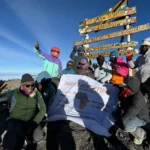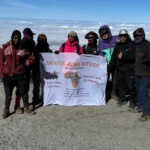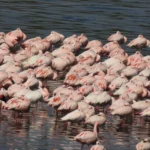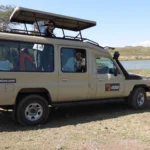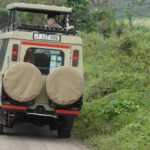Nyerere National Park Tanzania
This is the Africa’s Largest National Park! The Park with staggering size of 30,893km2 host one of the world’s largest concentration of wildlife. The collection of wildlife both in diversity and abundance is just remarquable! Visitors to this vast sanctuary will be able to see astounding volume of wildlife both rare and common species.
The park host the famous ‘’Big Five’’ and some rare species of antelopes like Roan Antelope, Brindled Gnu, Lichtenstein hartebeest, roan, and sable antelopes, Kudu etc.!
The Park experiences bimodal rainfall season and the short rains fall in November and December and are followed by a partial drying out in January and February. Thereafter, the long rains follow ending in early May. It is located at an altitude between 100 and 400 meters with annual average rainfall
Getting there Nyerere National Park Tanzania
The Park can be accessed by road or air
Road: From Dar es salaam to Nyerere National Park is about 250km via Kibiti
Air: There are regular flights from Dar es salaam,Kilimanjaro and Arusha to a number of small airstrips in the Park.
The Rufiji River,Myriad oxbows, delta and Lakes
The Rufiji is East Africa's largest river. It flows through the northern part of the Park, and this river which is slow moving and wide, has created a number of oxbow lakes in its northern flood plains, and they create a beautiful landscape of plains and woodlands interspersed with expanses of water.
Large Populations of African Wild dogs
In Nyerere African Hunting Dogs are thriving, unlike most of those elsewhere on the continent .In fact, the park has the last true stronghold for African hunting dog in Africa. While this species is highly endangered and seen in few areas,Nyerere gives visitors chance to see them.
Highest Concentration of Hippos and Crocodile
Rufiji River in Nyerere National Park is home t plenty of hippos and Nile crocodiles
Diverse birdlife
In Nyerere National Park, bird life is diverse and abundant. More than 440 species of birds has been recorded! These species are found in sandbanks, oxbow lakes and channels are home to these species. The rare species of pel's fishing owls and white backed heron which live in the wooded section of the riverbank.
Continent Largest Population of Elephants
The largest concentration of elephants on the continent has been known for taking home in this park.
Rare Species of Antelopes
Apart from being very famous for elephants, rhinos and hippopotamus, Nyerere has also a vast range of game including: brindled gnu, Nyasaland gnu, sable antelope, eland, greater kudu, waterbuck, hartebeest, zebras, giraffe, reedbuck, warthog, spotted hyena ,lion, leopard, hunting dog, in addition to the largest populations of buffalo in Africa.
Activities Selous national park Tanzania
Nyerere National Park has some of the activities that give visitors opportunities to enjoy its beauty. The Park will give opportunities to do walking safaris, Game Viewing by vehicles as well as Unforgettable boat trips along the mighty Rufiji.
Fact about Selous national park Tanzania
Nyerere National Park (formerly the northern part of Selous Game Reserve, pronunciation: “Seluu”) is the largest national park in Tanzania and also one of the world’s largest wildlife sanctuaries and national parks. The total area of the park is 30,893 km2 (11,928 sq mi) and covers the big part of Liwale District in western Lindi Region, south west Pwani Region, north eastern Ruvuma Region and a big part of south eastern Morogoro Region. The park is about the size of Belgium (Europe). Much of the area is in a wild state without being altered by human activities. The part of Selous game reserve is now running a hydro electric power. The park has a great river known as Rufiji River. Rufiji is Tanzania’s largest river and is home to many crocodiles and hippopotamuses. It is also one of largest mangrove forests in the world located at its delta.
History about Nyerere National Park
The original Selous Game Reserve traces its roots to 1896 when the then German Governor of Tanganyika proclaimed this vast area as a protected wildlife hunting reserve. Sometime in 1922 the reserve was named after Frederick Selous, a big game hunter turned wildlife conservationist. In 2019, it was decided by the Government of Tanzania that to further develop and enhance tourism in Selous, the northern part of the reserve will be excised to form the a new national park to be known as the Nyerere National Park, in honor of the first President of Tanzania, Mwalimu Julius Kambarage Nyerere. This new park was formally gazetted as a National Park in 2019 and now falls under the administration of TANAPA (Tanzania National Parks Authority ).











